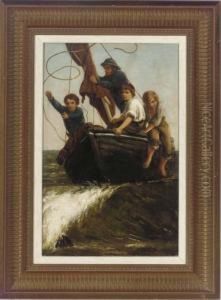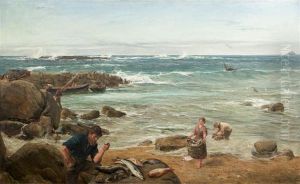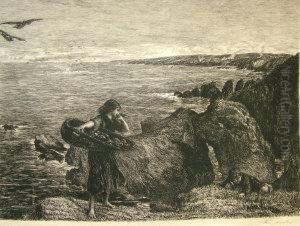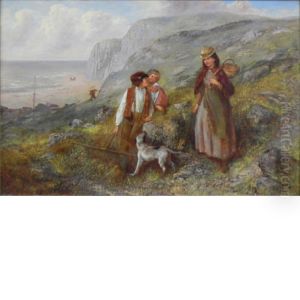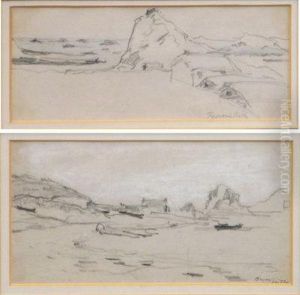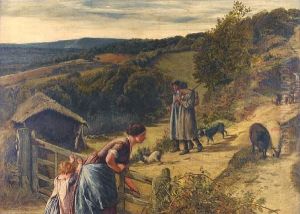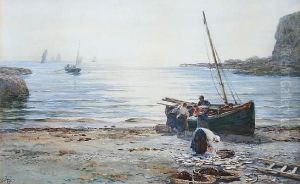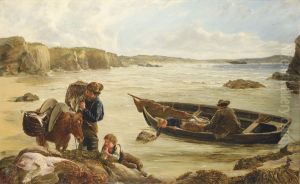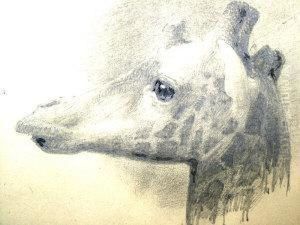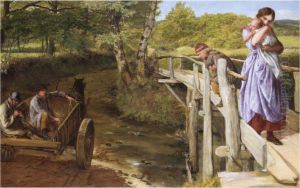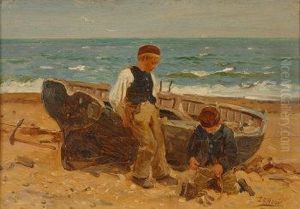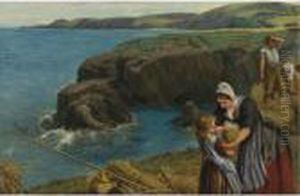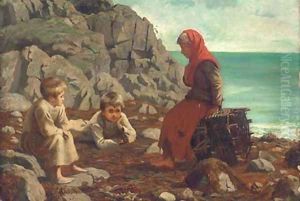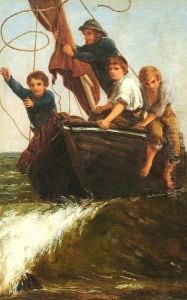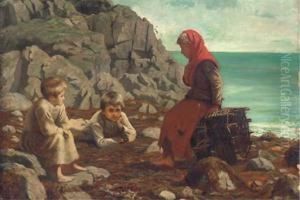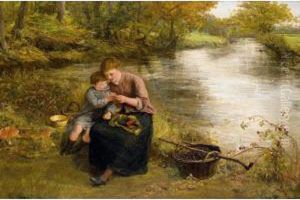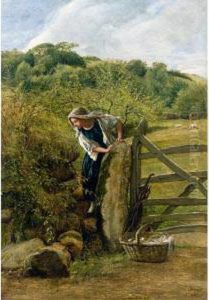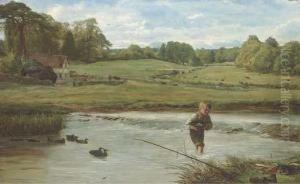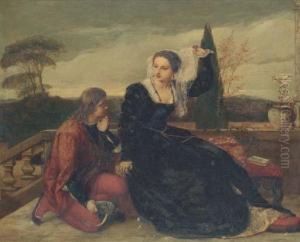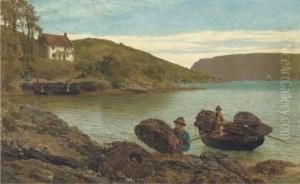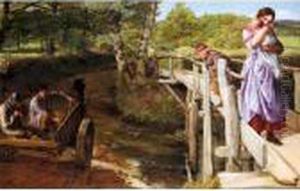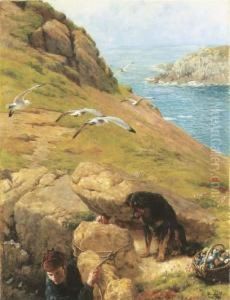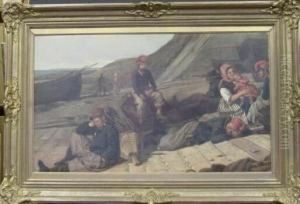James Clark Hook Paintings
James Clarke Hook was a prominent British painter and member of the Royal Academy. Born in London on November 21, 1819, Hook showed an early talent for art. His father, James Hook, was a composer and the organist at St. Paul’s Cathedral, which likely provided a creative environment for the young artist. Hook was educated at home before attending the Royal Academy Schools at the age of 17, where he excelled and won several medals for his work.
Hook’s early works were primarily historical scenes and landscapes. However, his focus shifted to marine and coastal scenes, which became the subjects he is best known for. His style was characterized by its romanticism and attention to detail, often featuring dramatic lighting and the powerful forces of nature.
In 1850, Hook was elected an Associate of the Royal Academy and became a full Academician in 1860. Throughout his career, he exhibited many works at the Academy and gained considerable fame and success. His paintings appealed to Victorian sensibilities and were celebrated for their narrative quality and technical proficiency.
Hook traveled extensively in pursuit of subjects for his paintings, particularly to the coasts of Wales, Cornwall, and Devon. His ability to capture the lives of fishermen and the rugged beauty of the British shoreline resonated with audiences of the time.
James Clarke Hook’s later years were marked by continued artistic output and respect from his peers. He lived long enough to see the transition of the art world from the dominance of Romanticism to the new wave of Impressionism and beyond, although he remained true to his own style until his death. Hook passed away on September 14, 1907, leaving behind a legacy of influential maritime and landscape paintings that continue to be studied and admired for their depiction of Victorian Britain.
